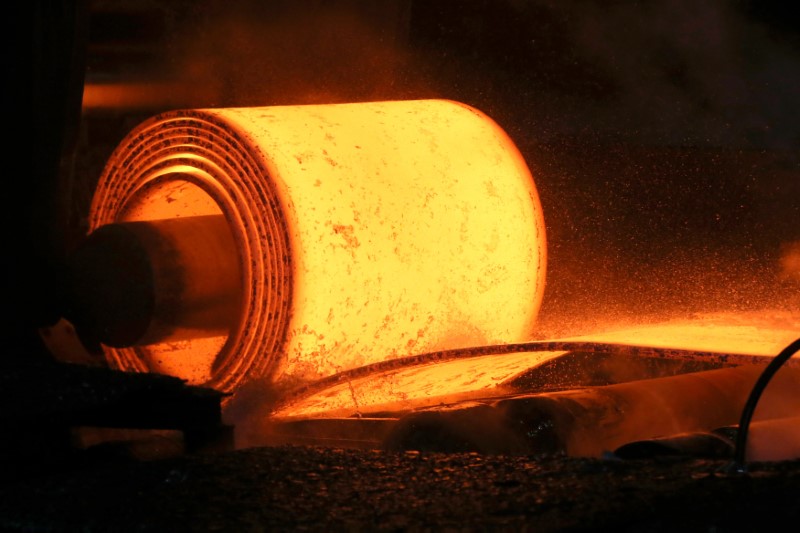What is the impact of steel, aluminum tariffs on inflation

The imposition of tariffs on steel and aluminum imports has resurfaced as a potential economic disruptor, raising concerns over inflationary pressures in the United States.
As per Deutsche Bank (ETR:DBKGn) Research, proposed tariffs—including a 25% duty on steel and aluminum imports—could have measurable effects on core inflation in 2025, with a projected increase of 30 to 40 basis points (bps), depending on the degree of passthrough to consumer prices.
The broader discussion around tariffs extends beyond the direct costs imposed on imported goods.
Historically, tariffs tend to trigger price increases across supply chains, affecting not just the raw materials themselves but also the industries that rely on them.
Steel and aluminum are key components in sectors such as automotive manufacturing, construction, and consumer appliances, meaning higher costs in these areas are likely to translate into higher consumer prices.
Deutsche Bank analysts estimate that, if additional reciprocal tariffs on other goods were to take effect, the inflationary impact could be even more pronounced, potentially pushing overall inflation above 3.5% for the year.
While the Federal Reserve has signaled a preference for “look through” one-time price level shocks, the persistence of inflation could pose challenges for policymakers.
If inflation expectations rise or if the labor market shows renewed tightness, the Fed may find itself constrained in maintaining a steady interest rate policy.
This is particularly relevant given that price increases stemming from tariffs often take several quarters to filter through to consumers, meaning inflationary pressures could persist even as other economic factors fluctuate.
The structure of tariffs also plays a role in how inflation materializes. According to Deutsche Bank’s projections, total U.S. imports were about 16.4% of core personal consumption expenditures (PCE) in 2023.
If reciprocal tariffs are fully passed through, the price level could increase by roughly 50 bps. A more moderate passthrough assumption of 50% would lead to a 25 bps increase, while a 75% passthrough would result in a 40 bps impact.
In the case of steel and aluminum specifically, where imports accounted for approximately 0.37% of core PCE, a 25% tariff would add an estimated 9 bps to the price level if fully passed through.
Even at a lower passthrough rate of 50-75%, the inflationary impact remains significant, at 5-7 bps.
The effects of these tariffs are not limited to the immediate sectors affected. Higher input costs for manufacturers could lead to downstream inflation in goods-intensive services such as motor vehicle repair and certain segments of the food industry.
Additionally, the potential spillover effects could extend to markets such as used cars and airline fares, as companies adjust pricing strategies in response to rising costs.
Another factor at play is the interaction between tariffs and global trade relationships. Deutsche Bank’s analysis highlights that the U.S. had a weighted average tariff rate of 1.5% in 2022.
If the proposed reciprocal tariffs were implemented, that rate could rise to 4.8%, marking a significant increase in trade barriers.
This shift could also provoke retaliatory measures from key trading partners, further exacerbating price pressures and economic uncertainty.
The inflationary impact of these tariffs is expected to be strongest in 2025, tapering off as the price level adjusts in following years.
As a result, Deutsche Bank cautions that additional universal tariffs – such as a proposed five-percentage-point baseline tariff excluding imports from Canada and Mexico – may introduce further inflationary risks in late 2025 and early 2026.
Managing inflationary pressures without stifling economic growth remains a challenge for policymakers and businesses alike.
The use of tariffs is often marketed as a means of protecting domestic industries, but its downstream effects on inflation and economic stability need to be carefully considered.
Any additional upward pressure from trade policy could complicate efforts to achieve price stability in the near future, given that inflation is already a major concern for the Federal Reserve.





